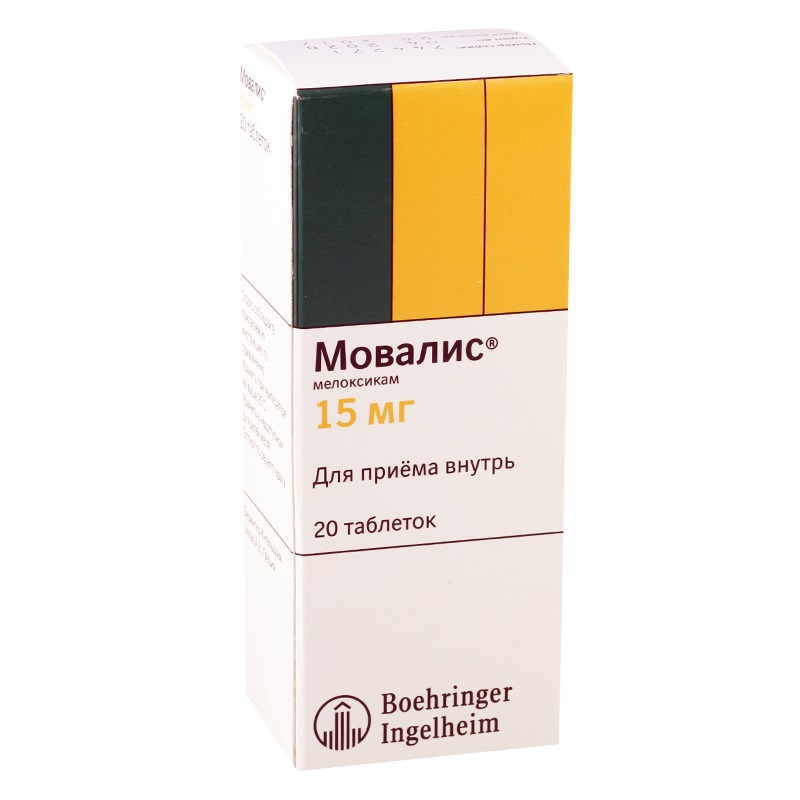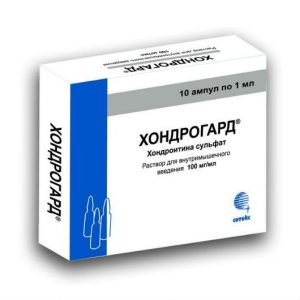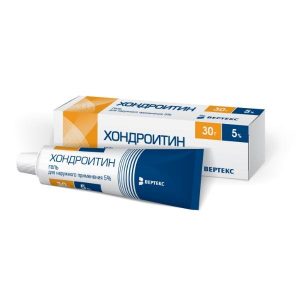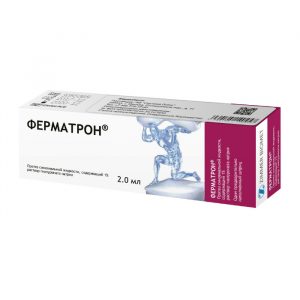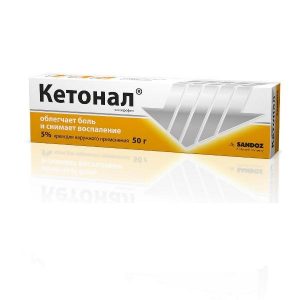Description
Release form
Tablets.
Packing
20 pcs.
Pharmacological action
Movalis is a non-steroidal anti-inflammatory drug, refers to derivatives of enolic acid and has anti-inflammatory, analgesic and antipyretic effects. The pronounced anti-inflammatory effect of meloxicam is established on all standard models of inflammation.
The mechanism of action of meloxicam is its ability to inhibit the synthesis of prostaglandins – known mediators of inflammation.
In vivo meloxicam inhibits prostaglandin synthesis at the site of inflammation to a greater extent than in the gastric mucosa or kidneys.
These differences are associated with a more selective inhibition of cyclooxygenase-2 (COX-2) compared to cyclooxygenase-1 (COX-1). It is believed that inhibition of COX-2 provides a therapeutic effect of NSAIDs, while inhibition of the constantly present COX-1 isoenzyme can cause side effects from the stomach and kidneys.
Meloxicam selectivity for COX-2 was confirmed in various test systems, both in vitro and ex vivo. The selective ability of meloxicam to inhibit COX-2 is shown when using in vitro human whole blood as a test system.
Ex vivo found that meloxicam (at doses of 7.5 and 15 mg) more actively inhibited COX-2, having a greater inhibitory effect on the production of prostaglandin E2 stimulated by lipopolysaccharide (a reaction controlled by COX-2) than on the production of thromboxane, which is involved in blood coagulation (reaction controlled by COX-1). Et
Ex vivo found that meloxicam (at doses of 7.5 and 15 mg) more actively inhibited COX-2, having a greater inhibitory effect on the production of prostaglandin E2 stimulated by lipopolysaccharide (a reaction controlled by COX-2) than on the production of thromboxane, which is involved in blood coagulation (reaction controlled by COX-1). Et
Ex vivo found that meloxicam (at doses of 7.5 and 15 mg) more actively inhibited COX-2, having a greater inhibitory effect on the production of prostaglandin E2 stimulated by lipopolysaccharide (a reaction controlled by COX-2) than on the production of thromboxane, which is involved in blood coagulation (reaction controlled by COX-1). Etand effects were dose-dependent.
Ex vivo showed that meloxicam at recommended doses did not affect platelet aggregation and bleeding time, unlike indomethacin. diclofenac. ibuprofen and naproxen. which significantly suppressed platelet aggregation and increased bleeding time.
In clinical studies, side effects from the gastrointestinal tract (GIT) as a whole occurred less frequently when taking meloxicam 7.5 and 15 mg than when taking other NSAIDs with which comparison was made. This difference in the frequency of side effects from the gastrointestinal tract is mainly due to the fact that when taking meloxicam, less often observed phenomena such as dyspepsia, vomiting, nausea, abdominal pain.
The frequency of perforations in the upper gastrointestinal tract, ulcers and bleeding, which were associated with the use of meloxicam, was low and depended on the dose of the drug.
Indications
Symptomatic treatment: – rheumatoid arthritis
– osteoarthritis
– ankylosing spondylitis.
Contraindications
– peptic ulcer of the stomach and duodenum in the exacerbation phase
– severe liver dysfunction
– renal failure (without hemodialysis)
– pregnancy
– lactation – early childhood lactation hypersensitivity to meloxicam and other NSAIDs (including salicylates).
– Movalis for intramuscular injection should not be prescribed to patients receiving anticoagulants, given the possible risk of developing intramuscular hematoma
– Movalis is not prescribed for patients who have had asthma attacks or nasal mucosa polyps due to the administration of acetylsalicylic acid or other NSAIDs, angioedema, urticaria.
Use during pregnancy and lactation
Although no teratogenic effects have been reported in preclinical trials, Movalis should not be prescribed during pregnancy and lactation.
Special instructions
Movalis should be used with caution in concomitant diseases of the upper gastrointestinal tract, as well as in patients receiving anticoagulant therapy. In case of peptic ulcer or gastrointestinal bleeding, the drug should be discontinued.
With the appointment of Movalis, the development of gastrointestinal bleeding, ulcerative lesion or perforation is possible, if the patient has a history of previous symptoms and episodes of similar complications from the gastrointestinal tract, and without them. In old age, a more severe course of these complications is noted.
Particular attention should be paid to patients who have undesirable effects on the skin and mucous membranes, in such cases, consideration should be given to discontinuing the drug Movalis.
NSAIDs inhibits the synthesis of renal prostaglandins, which are involved in maintaining an adequate level of renal blood flow. The administration of NSAIDs to patients with reduced renal blood flow and BCC can accelerate the decompensation of the kidneys, however, after discontinuation of NSAID therapy, renal function usually returns to its previous level.
The risk of adverse reactions is especially high in patients with dehydration phenomena, congestive heart failure, liver cirrhosis, nephrotic syndrome and severe kidney diseases, in patients receiving diuretics, as well as in those who underwent significant surgery that led to hypovolemia. Such patients from the very beginning of treatment require careful monitoring of diuresis and renal function.
In rare cases, an increase in serum transaminase levels or a change in other indicators characterizing liver function has been reported. In most cases, deviations from the norm were minor and transient. With a more pronounced or permanent nature of violations of the liver function indicators, you should stop taking Movalis and conduct control laboratory studies.
In patients with clinically non-progressive cirrhosis, a dose reduction is not required.
Weakened and emaciated patients can tolerate more severe side effects, such patients need careful monitoring.
Movalis should be used with caution in elderly patients who are more likely to have impaired renal, hepatic, or cardiac function. NSAIDs may contribute to sodium retention, potassium and water and weaken the natriuretic effect of diuretics. As a result, in the presence of predisposing factors, the appointment of NSAIDs can lead to the progression of heart failure and hypertension.
Effect on the ability to drive vehicles and control mechanisms
During the treatment period, when visual impairment, dizziness or drowsiness occurs, you must refrain from driving vehicles and engaging in potentially dangerous activities that require an increased concentration of attention and speed of psychomotor reactions.
Composition
Active substance:
meloxicam 15 mg
Excipients:
sodium citrate
lactose
MCC
povidone (Kollidon 25),
colloidal silica
crospovidone
magnesium stearate
Dosage and administration of
The drug is prescribed for adults.
Movalis can be used IM only in the first few days of treatment. For subsequent therapy, dosage forms of the drug for oral administration (tablets) should be prescribed.
With rheumatoid arthritis and ankylosing spondylitis, the drug is prescribed at 15 mg / day, if a positive therapeutic effect is achieved, the dose can be reduced to 7.5 mg / day.
In osteoarthritis, the daily dose is 7.5-15 mg / day.
The maximum daily dose is 15 mg.
Inside In individuals with an increased risk of side effects, treatment should be started with a dose of 7.5 mg / day.
In patients with severe renal failure who are on hemodialysis, the drug is prescribed in a daily dose of 7.5 mg.
In patients with moderate renal failure (CC greater than 25 ml / min), a dose reduction is not required.
Tablets should be taken with meals, washed down with water or another drink.
Side effects of the
Digestive system:> 1% – dyspepsia, nausea, vomiting, abdominal pain, constipation, flatulence, diarrhea 0. 1-1% – transient changes in liver function indices (including increased levels of transaminases or bilirubin), belching, esophagitis, gastrointestinal ulceration, latent or macroscopically visible gastrointestinal bleeding From the hemopoietic system:> 1% – anemia 0.1 -1% – hemogram change, incl. a change in the number of individual types of white blood cells, leukopenia, thrombocytopenia.
Dermatological reactions:> 1% – itching, rash 0.1-1% – stomatitis, urticaria <0.1% - photosensitivity. Allergic reactions: in some cases – bullous reactions, erythema multiforme, Stevens-Johnson syndrome, toxic epidermal necrolysis. From the respiratory system: From the nervous system:> 1% – headache 0.1-1% – dizziness, tinnitus, drowsiness From the cardiovascular system:> 1% – edema 0. 1-1% – increased blood pressure, palpitations, flushing.
From the urinary system: 0.1-1% – change in kidney function (increased creatinine and / or urea in the blood) less than 0.1% – acute renal failure in some cases – interstitial nephritis, glomerulonephritis, renal medullary necrosis, nephrotic syndrome.
On the part of the organ of vision: Allergic reactions:
Drug Interactions
With the simultaneous administration of more than one drug from the NSAID group due to synergism, there may be an increased risk of ulcerative lesions or bleeding from the gastrointestinal tract.
NSAIDs have been reported to increase plasma lithium levels. Repeated determination of the concentration of lithium in plasma at the beginning and end of treatment, as well as after changing the dose of Movalis, is recommended.
whileprescribing with potentially myelotoxic drugs may develop cytopenia. Movalis may enhance hematologic toxicity of methotrexate. In such cases, monitoring of the number of blood cells is necessary.
There are reports that NSAIDs reduce the effectiveness of intrauterine contraceptives.
In the treatment of NSAIDs, there is the potential for the development of acute renal failure in patients with dehydration. Patients using Movalis concurrently with diuretics should receive a sufficient amount of fluid, before starting Movalis therapy, they need to determine the functional state of the kidneys.
During therapy with NSAIDs, a decrease in the effectiveness of antihypertensive agents (e.g. beta-blockers, acetylcholinesterase inhibitors, vasodilators, diuretics) due to inhibition of the synthesis of prostaglandins-vasodilators.
Colestyramine binds to meloxicam in the gastrointestinal tract, which leads to accelerated elimination of meloxicam from the body.
NSAIDs can indirectly enhance the nephrotoxicity of cyclosporin via renal prostaglandins. With the simultaneous appointment of Movalis and cyclosporine, renal function should be monitored.
The possibility of drug interaction of meloxicam with hypoglycemic agents cannot be ruled out.
NSAIDs can cause sodium, potassium, fluid retention and weaken the action of saluretics. As a result, in predisposed patients, the administration of NSAIDs can lead to progression of heart failure and hypertension.
The possibility of pharmacokinetic interaction with the simultaneous administration of meloxicam and drugs that reduce activity or are metabolized with the participation of CYP2C9 or CYP3A4 isoenzymes should be considered.
No pharmacokinetic drug interaction was detected with the simultaneous administration of meloxicam and antacids, cimetidine, digoxin, furosemide.
Overdose
Treatment: gastric lavage and standard ancillary activities. The specific antidote is unknown. During clinical trials, cholestyramine has been shown to accelerate the elimination of meloxicam.
Storage conditions
Store in a dark place at a temperature not exceeding 25 ° C.
Shelf life
5 years.
Deystvuyushtee substance
Meloxicam
Dosage form
tablets
Possible product names
MOVALIS 0.015 N20 TABLE
Movalis 15mg Tab. X20
Movalis 15mg No. 20 tab
Movalis 15mg No. 20 TB
MOVALIS 15MG. No. 20 TAB.
Beringer Ingelyhaym, Austria
